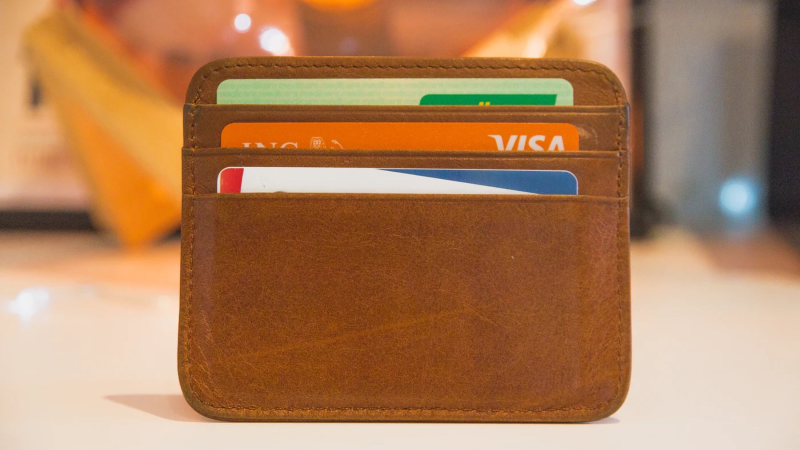Often at the beginning of the school year, good resolutions blossom in our heads, in our already overflowing agendas… but also in our wallets! Managing the family budget is one of the good habits to adopt and to keep all year long.
To get a clear picture, it is first important to identify all sources of income and expenses (salary, rent, mortgage, car, household, etc.). Having a detailed balance sheet in an Excel spreadsheet, a smartphone application or a dedicated software, helps to keep track of the accounts… and above all to keep a clear head all year long!
The benefits of good family budget management
Managing your daily expenses is not as simple as typing your credit card code! The family budget includes a large number of expenses, fixed, current, exceptional, etc. Knowing how much money you spend, collect, or save, offers personal and financial advantages!
- Peace of mind: spend with knowledge and confidence
- Control and power: you are the "master" of the budget and you can identify adjustment variables.
- Planning and anticipation: anticipating unforeseen events facilitates family organization and avoids overindebtedness.
- Goals and motivation: each family has its own goals! Some families want to finance projects such as buying a house, a long trip, the birth of a child, etc. Many families simply want to avoid overdrafts. Many would simply like to avoid overdrafts at the end of the month, while others would like to save more or reduce unnecessary expenses.
How to manage your family's budget
Before taking advantage of these benefits, analyze your sources of expenses and income carefully. Here are detailed, but not exhaustive, lists of types of expenses and income. This one is much shorter… but still useful!
The possible sources of income include the salary of course, but also possible pensions (alimony, retirement, disability…), bonuses (birth bonus, activity bonus…), social benefits (family allowances, housing assistance, back-to-school allowance…) as well as other income from capital such as rent or interest on financial products, etc.
The types of expenses are more varied and can be prioritized:
- Fixed expenses: they are regular each month, and more or less the same from one month to the next. They include rent or mortgage repayments as well as condominium fees, utilities (electricity, gas, water), various subscriptions (TV, streaming, Internet, telephone), utilities (income tax, property tax, local tax, council tax…), childcare costs (nanny, canteen, school, extracurricular activities…), insurance (car, home, school, mutual insurance…), bank charges, etc.
- Variable expenses: they are common, but the amount is variable. Contrary to fixed expenses, you have a greater power of choice and arbitration on variable expenses, even if they are necessary, such as food shopping, house maintenance, health expenses, or transportation expenses (car maintenance, gasoline, public transportation…).
- Occasional expenses: some are for leisure (entertainment, cultural outings, vacations, travel, relaxation, etc.), others include expenses for various equipment (toys, books, computers, etc.).
- Personal expenses: each member of the family has his or her own expenses, such as clothing, hygiene and care (beauty, hairdressing, etc.), etc. There may also be sports or cultural subscriptions (gym, museum passes, theaters, etc.)
- Anticipated or exceptional expenses: dentist, optician, gifts, etc. are part of the expenses to be foreseen in the budget, just like the car that breaks down or a problem with the washing machine.
This classification must be adapted to your own lifestyle, your activities and the way your family is organized. Some manage the family budget by grouping expenses into categories (housing, food, household equipment, transportation, clothing, health, education, leisure, etc.). For example, the car budget includes fuel, insurance, maintenance, tolls, car loan repayments, etc.
For people who don't have the patience to track their expenses in detail, there is another tool: the 50/20/30 rule, i.e. 50% of the family budget for needs, 20% for savings or debts and 30% for wants.
5 steps to build a family budget
Life has its share of financial responsibilities (rent, taxes, etc.) so when you have children, the expenses add up quickly. Your family budget becomes a real dashboard! Usually built at the beginning of the year (school or calendar), you can readjust it over time to manage a monthly budget, according to the evolution of the family's needs and resources.
To begin creating your family budget, follow the steps below and refer to the many sources of income and expenses listed above.
- Sum up the household income.
- List expenses ( yearly or monthly) and note costs
- Calculate net income: total expenses deducted from income.
- Strategize: Is there any money left over at this point? If so, what should you spend it on? Savings, a special vacation, recreation…? If not, go to step 5!
- Analyze and rationalize: now that all the figures are in, visualize the items to be optimized and the savings to be made…
Then, each one chooses his means of navigation: Excel table, application, workbook, dedicated software…
Today, there are more and more mobile applications that offer budget management services. This is the case of some banks, which offer to manage your budget automatically, while keeping an eye on your expenses.
The Share(d) application, which allows you to get your daily life organized with the members of your family, also offers you the possibility to manage the family budget in a simple way.
You put in what you want: fixed, recurring, variable or exceptional expenses (not forgetting the purchase of the third pair of soccer shoes of the year!).
The application then takes care of sorting the expenses. It can also create a balance of distribution in order to manage the accounts smoothly between separated parents.
Spend less, consume differently: our tips for optimizing the family budget
More and more families are turning to recycling. Second-hand shops, garage sales, second-hand stores, this way of buying allows to find second-hand objects at a lower cost. To make ends meet, think about reselling: toys or children's clothes in good condition, childcare equipment, useless computer equipment…, by emptying your closets, you participate in the collaborative economy and make space for new purchases!
Environmental issues are important, even in family life. Many are turning to the consumption of "sustainable" products, to buy new but "responsible". To do this, environmental labels (European Ecolabel, NF Environnement, GOTS for clothing, etc.) indicate that products are more resistant, easily dismantled, repairable, easy to maintain or that they have an extended warranty.
Do it yourself also brings a double ecological/economical benefit. You can easily make your own household products by following the recipes of specialized blogs. In the kitchen, a lot of products can be made by yourself like yoghurts, jams, cakes…. It is a good way to reduce packaging and consumption of industrial products.
The mutual aid between individuals is gaining ground, it's good news for families, and therefore for your budget! On social networks, the number of self-help groups has exploded. Donations, bartering, sharing, the exchange of services between individuals can find its place in your budget management application!
Finally, the "good plan of the century" is for children! We sow little seeds, explaining the importance of our purchases, the impact of our consumption patterns, etc. This awareness will encourage the whole family to move from small gestures to big actions!



